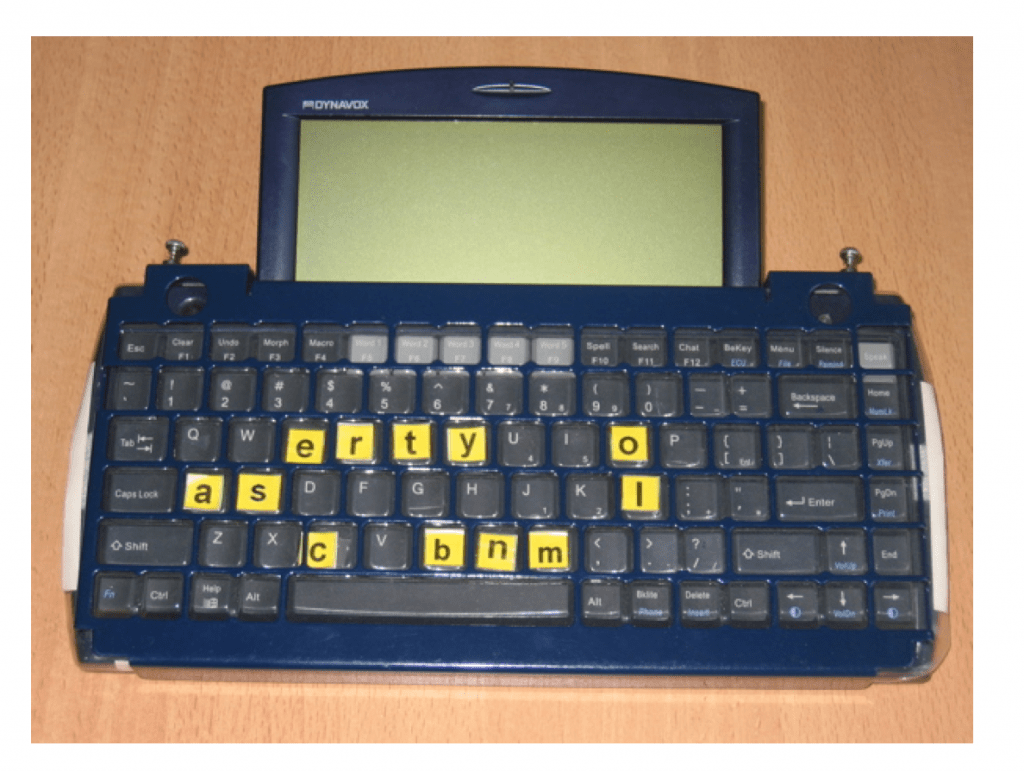
In order to learn how to read and write, it is critical for learners to know the sound(s) that each letter makes and the letters that represent each sound.
So early in instruction, we introduced Anna to the letters of the alphabet and the sounds that they produce. We started by teaching her lower case letters since these are the ones that are seen most frequently in written texts. Later we introduced upper case letters.
We taught her the letters and sounds incrementally, one at a time. We introduced a new letter as soon as she demonstrated competence with the prior letter. We regularly reviewed letters to provide additional practice and increase her fluency.
We taught the letters and sounds that occurred most frequently first; later we taught those that were less frequently occurring. We tried to separate letters and sounds that were similar (e.g., we did not teach b and d together or m and n).
We started by teaching letters that had continuous sounds that could be held (e.g., a, m).
In general terms, we taught the letters and sounds in the following sequence:
a, m, t, p, o, n, c, d, u, s, g, h, i, f, b, l, e, r, w, k, x, v, y, z, j, q
We didn’t follow this sequence exactly. Sometimes we introduced a letter and sound a little earlier in the sequence if it was of particular interest to Anna. For example, with one of our older learners who had severe autism, we started letter sound instruction with the letter y since he was a huge fan of YouTube. We wanted to demonstrate the power of literacy skills and increase his motivation for learning early in instruction.
Goal for Letter Sound Correspondences
Anna’s goal for instruction in letter sound correspondences was as follows:
When presented with a sound orally, Anna will select the correct letter from a field of 4 letters with >80% accuracy on two consecutive sessions.
Teaching Letter Sound Correspondences

There were several different ways that Anna could use to indicate the correct letter. She could point to it or hand it to us. Anna was already used to handing a card to a partner so we had her use that response initially. When teaching new skills, it is important to introduce only one new learning demand at a time. Learning letter sounds was new so initially we used a response that was already familiar to Anna.
Teaching tip: Many learners with autism perform best within familiar routines when response expectations are understood. Anna was already used to handing a card to a partner so we used that response. When teaching new skills, it is important to introduce only one new learning demand at a time. Learning letter sounds was new so initially we used established response modes.
Once Anna had learned a few of the letter sounds, we also introduced her to a keyboard to start to prepare her for writing activities. We adapted the keyboard to use lower case letters.

We highlighted the letters on the keyboard that Anna had learned so far to narrow the response options. We provided Anna with lots of opportunities to practice letter sounds using the keyboard as well as letter cards. As Anna learned new letters and sounds, we highlighted these keys on the keyboard as well.
In some cases, Anna was able to say the letter sound. For these letters, we also encouraged her to say the sound when presented with the letter card. In this video, you will see Anna very early in instruction, learning the letter sounds for a and m. The instructor shows her a letter card, models the correct sound, and then encourages Anna to say the sound.
You will notice that we are focusing on the letters and their sounds, not their names. Learning letter names early on can be confusing for learners like Anna. When Anna starts to apply her letter sound knowledge to decode words, she will need to say the sounds, not the names. Saying the letter names will not help her decode the word. So we focused on teaching Anna letter sounds first; we waited and taught her letter names later once she had acquired the letter sounds.
Learning letter sounds can be difficult as the relationship is very abstract – there is no meaning in the letter or sound alone. So we introduced new letter sounds to Anna using books that linked the sound to familiar words that started with the sound. This was a way to demonstrate the importance of letter sounds and link them to meaningful content.
We collected data for each instructional session, recording the target letter and sound as well as Anna’s response. We used the data to monitor Anna’s progress and adjust instruction according to her needs. We conducted an error analysis to determine letter sounds that were more difficult for her and provided additional practice with these letter sounds.
For more information on teaching letter sounds to children with complex communication needs like Anna, visit our website on Literacy Instruction at aacliteracy.psu.edu.